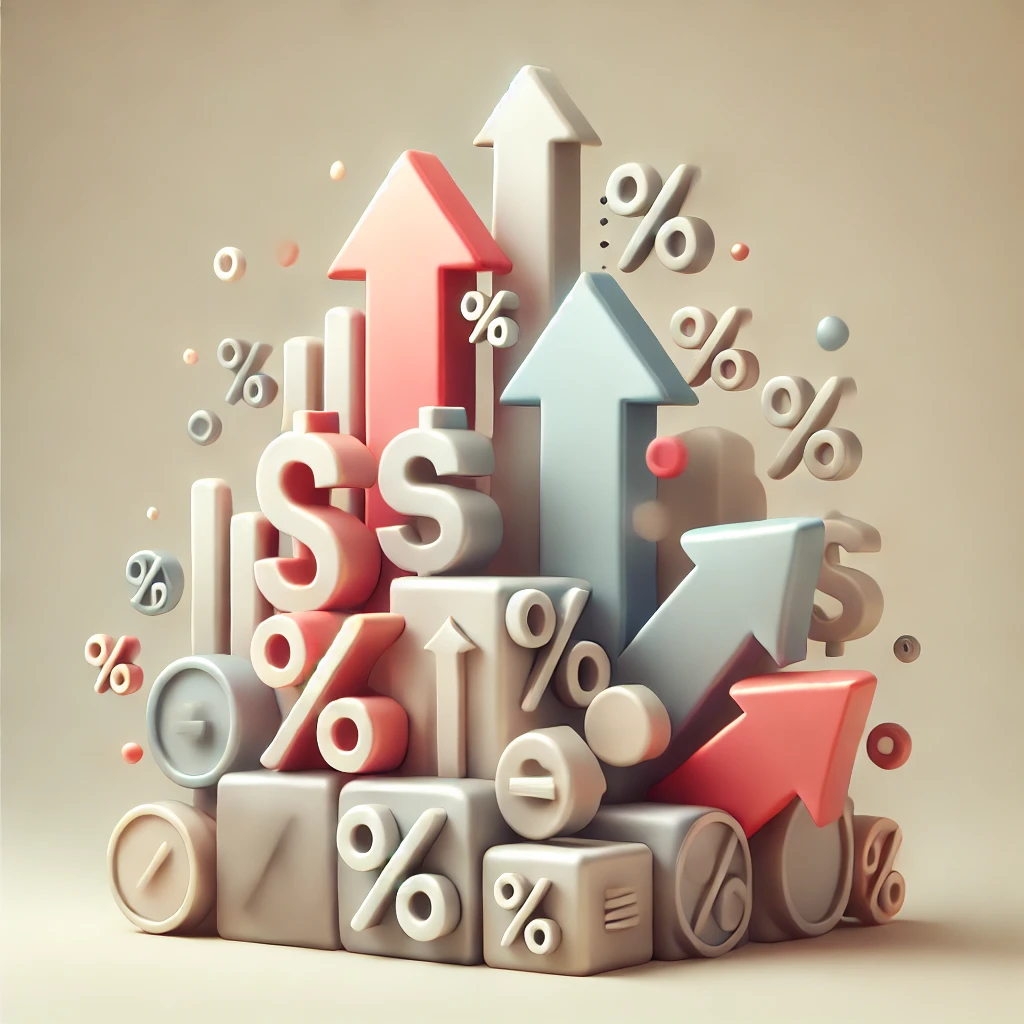
Inflation and Types of Inflation. What is Inflation?
Inflation and Types of Inflation. Definition and Effects of Inflation
Definition and Effects of Inflation
Inflation refers to an increase in general price levels, which leads to a decrease in the purchasing power of the currency over time. This increase in prices means that more money has to be spent on goods and services. The main causes of inflation include demand exceeding supply, increases in costs and an increase in the money supply. In the long run, inflation expectations also influence the monetary policy decisions of central banks.
Calculation Methods and Importance
Inflation is calculated by means of indices that measure price changes over a given period. The most commonly used tools in this process are the Consumer Price Index (CPI) and the Producer Price Index (PPI). The CPI measures changes in the prices of goods and services purchased by consumers, while the PPI evaluates changes in the prices of goods and services in the production stage. The inflation rate is calculated as the percentage change in these indices over a base period. This calculation, which covers price movements in a wide range of products and services, allows the increase in general price levels to be determined. This rate plays a critical role in economic policy decisions and financial planning.
Causes and Factors Affecting Inflation
The main causes of inflations are excess demand, cost increases and expansions in the money supply. Excess demand occurs when the demand for goods and services in the market exceeds the supply as consumers’ purchasing power increases. Cost increases are defined as increases in the cost of inputs used in production, such as labour, raw materials and energy, which are directly reflected in product prices. An expansion in the money supply is related to central banks printing money and easing credit conditions. These three main factors interact with each other to determine the structure of inflations. In addition, economic policies such as fluctuations in exchange rates and changes in international trade also have a significant impact on inflation.
Economic Effects and Consequences
The effects of that on the economy can be both positive and negative. Mild inflation can stimulate economic growth by providing producers with the opportunity to raise prices and improve profit margins. However, high inflation reduces consumers’ purchasing power, raises the cost of living and reduces savings rates. This creates uncertainty for investors and makes long-term planning difficult. Moreover, the relationship between inflations and interest rates may affect credit costs, making borrowing and investment decisions more difficult. In international trade, inflation differences may reduce the competitiveness of exporting countries by affecting exchange rates. Therefore, keeping that under control is critical for economic stability and sustainable growth.
Definitions and Economic Effects
Manifests itself in various ways in the economy with its different types. Demand inflation occurs when the increased purchasing power of consumers increases demand for goods and services and exceeds supply. This situation is usually observed during periods of economic growth and causes an increase in general price levels.
Supply inflation, on the other hand, occurs when producers pass on increases in production costs to the prices of final goods and services. Increases in raw material, labour and energy costs are the main causes of this type of inflation.
Built-in inflations is a type of inflations that persists over a long period of time and is integrated into the public’s expectations of price increases. This can cause inflation to become a self-reinforcing cycle, which reduces the effectiveness of economic policies.
Core inflation aims to measure the underlying trends of inflation more precisely by excluding volatile prices such as energy and food. This is a calculation method that is not affected by short-term price fluctuations.
Hyperinflation is defined as uncontrollable, extremely rapid price increases in the economy. It is characterised by monthly inflation rates of 50% or more and can seriously undermine economic stability.
Disinflation is a process in which the rate of price increase slows down but prices are still rising. This usually occurs during periods of tight monetary policy or economic slowdown.
Deflation, on the other hand, refers to a situation in which general price levels fall continuously and the purchasing power of the currency increases. Factors such as a decline in consumer demand or a fall in production costs can trigger this situation.
Stagflation occurs when periods of economic stagnation or low growth are accompanied by high inflations. It is characterised by high unemployment rates and weak economic growth, accompanied by rapidly rising prices and poses a major challenge for economic policy.



